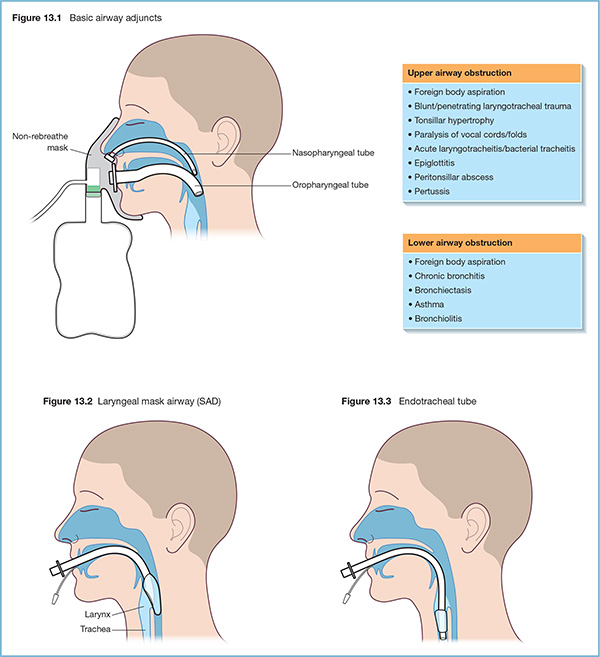13 Maintaining an oxygen supply to the heart, brain and other vital organs is of primary importance in critical care. Preserving a patent airway is thus paramount. In this chapter, we will consider how to identify a compromised airway and then work through the airway ladder, from manual airway manoeuvres to the use of airway devices. Discussion of the complex airway and failed airway drills is covered in other chapters. When approaching the casualty, check for a response: a conscious, speaking patient is able to maintain his airway and needs no further airway manipulation. However, a patient’s consciousness level may deteriorate rapidly at any time and regular reassessment of the airway is vital. If obtunded, the patient requires rapid airway assessment and management; a low GCS may be the cause or the result of a blocked airway. Look, listen and feel when assessing the airway: Pre-hospital management of the obstructed airway should begin with simple manoeuvres. Head tilt and chin lift
Basic airway management

Assessing the airway
Manual airway opening manoeuvres

Full access? Get Clinical Tree








